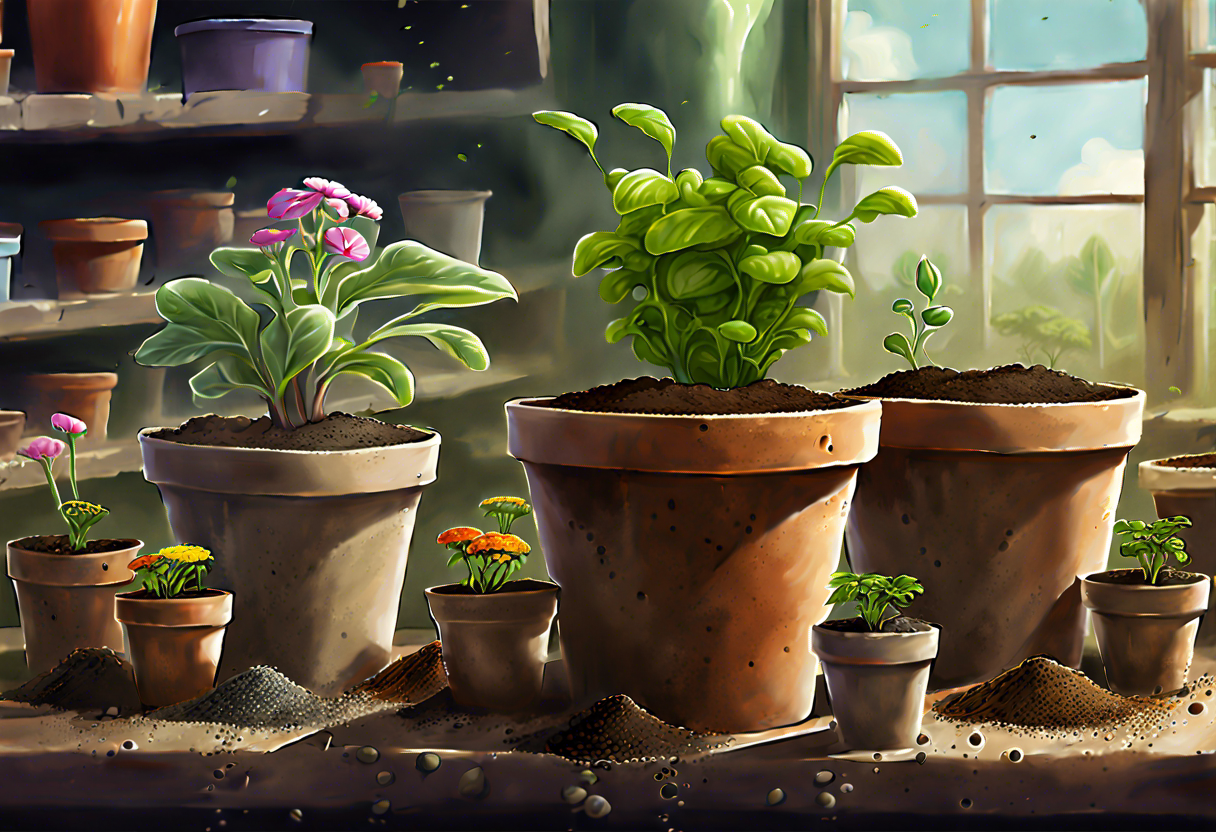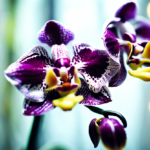What are Soilless Potting Mixes?
Soilless potting mixes, as the name suggests, are growing mediums that do not contain soil. They are composed of various organic and inorganic materials that provide the necessary support and nutrients for plants to thrive. These mixes are designed to provide the ideal conditions for plant growth, allowing gardeners to cultivate a wide range of plants, both indoors and outdoors.
A traditional potting mix typically contains a combination of soil, peat moss, and perlite or vermiculite. However, soilless mixes replace the soil component with other materials to create a more lightweight, well-draining medium. Some common components of soilless potting mixes include coco coir, sphagnum moss, perlite, vermiculite, and composted bark.
So why choose a soilless potting mix over traditional soil-based mixes? One major advantage is the ability to control the composition and characteristics of the growing medium. With soilless mixes, gardeners can create the perfect balance of drainage, aeration, and moisture retention for their specific plants. This flexibility allows for optimal root development, preventing issues such as root rot or waterlogged soil.
Soilless potting mixes also tend to be more lightweight than traditional soil mixes, making them easier to handle and transport. This is especially beneficial for container gardening or for individuals with physical limitations. The light texture of soilless mixes also promotes better root growth and aeration, resulting in healthier and more vigorous plants.
An additional advantage of soilless potting mixes is their reduced risk of pest infestations and disease. Soil can harbor pests, fungal spores, and plant pathogens, which can negatively impact plant health. By using a sterile soilless mix, gardeners can minimize these risks and create a more hygienic environment for their plants.
Soilless potting mixes offer numerous benefits for gardeners. Their ability to provide optimal growing conditions, flexibility in composition, lightweight nature, and reduced risk of pests and diseases make them a popular choice among horticulturists and plant enthusiasts. Whether you are a beginner or an experienced gardener, incorporating soilless potting mixes into your gardening routine can help you achieve healthier, more thriving plants.
Benefits of Using Soilless Potting Mixes
Soilless potting mixes have gained popularity among gardeners due to their numerous benefits. Whether you are an experienced gardener or a beginner, incorporating soilless potting mixes can significantly enhance the health and vitality of your plants. Here are some of the key advantages of using soilless potting mixes:
Promotes Proper Drainage
One of the major benefits of using soilless potting mixes is that they provide excellent drainage. These mixes are typically made up of a combination of organic materials, such as peat moss, vermiculite, and perlite. These components have porous structures that allow excess water to drain away, preventing the roots from becoming waterlogged. Proper drainage helps prevent root rot and ensures that oxygen reaches the roots, promoting healthy and vigorous plant growth.
Minimizes Disease and Pest Issues
Soilless potting mixes are generally sterile, meaning they are free from pathogens and weed seeds that can harm your plants. Using sterilized potting mixes reduces the risk of diseases and pests attacking your plants, which can be a common problem when using soil-based mixes. This is particularly beneficial for indoor gardening or when starting seeds, as it provides a clean and safe environment for the young plants to grow.
Enhances Nutrient Availability
Soilless potting mixes can be customized to suit the specific needs of different plants. They often contain added nutrients, such as compost, fertilizer, or slow-release pellets, that can provide a balanced and readily available source of nutrition for your plants. Additionally, the absence of soil in these mixes eliminates the risk of nutrient imbalances or deficiencies that may occur in traditional garden soils. This ensures that your plants receive the optimal nutrients they need for healthy growth.
Lightweight and Easy to Handle
Another advantage of using soilless potting mixes is their lightweight nature. Compared to traditional soil, these mixes are lighter and easier to handle, making them ideal for container gardening and indoor plantings. The lightweight nature also allows for better aeration and root growth within the pots or containers, leading to healthier and more robust plants.
Reduces Weed Growth
Since soilless potting mixes are typically weed-free, they can help reduce weed growth in your garden. Weeds can compete with your plants for nutrients and sunlight, hindering their growth and overall health. By using soilless mixes, you can minimize weed issues, saving you time and effort in weed control.
Incorporating soilless potting mixes in your gardening routine can provide a range of benefits. From promoting proper drainage and minimizing disease issues to enhancing nutrient availability and reducing weed growth, these mixes offer optimal conditions for your plants to thrive. Consider using soilless potting mixes for healthier, more vibrant, and successful gardening endeavors.
Different Types of Soilless Potting Mixes
Soilless potting mixes are becoming increasingly popular among gardeners and plant enthusiasts. These mixes are specially formulated to provide optimal growing conditions for plants without the use of traditional soil. In this article, we will explore the different types of soilless potting mixes and their unique characteristics.
Coco Coir Mix: Coco coir, which is derived from coconut husks, is a common ingredient in soilless potting mixes. It has excellent water retention properties, allowing plants to stay hydrated for longer periods. Coco coir also provides good aeration, preventing the roots from becoming waterlogged. Additionally, it is free from pests and diseases, ensuring a healthy growing environment.
Peat Moss Mix: Peat moss, derived from partially decomposed plant material, is another popular component in soilless mixes. It has excellent water retention capacity, making it ideal for moisture-loving plants. Peat moss also provides good drainage, preventing the roots from becoming waterlogged. However, it is important to note that the use of peat moss may contribute to the depletion of important natural resources.
Perlite Mix: Perlite, a volcanic glass that has been heated and expanded, is commonly added to soilless potting mixes. It improves aeration and drainage, preventing the roots from becoming waterlogged. Perlite also helps to lighten the mixture, making it ideal for potted plants. However, it is important to handle perlite with care, as the small particles can be easily inhaled.
Vermiculite Mix: Vermiculite is a mineral that is heated and expanded to create a lightweight and highly absorbent material. It helps to retain moisture in the soilless mix, ensuring that plants have access to water when needed. Vermiculite also improves aeration and encourages root growth. However, it is important to note that vermiculite may contain trace amounts of asbestos, so choosing a reputable source is crucial.
Rockwool Mix: Rockwool, also known as stone wool, is made by spinning molten rock or slag into fibers. It is often used in hydroponic systems but can also be incorporated into soilless potting mixes. Rockwool provides excellent aeration and drainage, allowing the roots to grow freely. It also retains moisture well and provides good support for plant roots.
Soilless potting mixes offer numerous benefits for plants, and choosing the right mix is essential for optimal growth. Whether you opt for a coco coir mix, peat moss mix, perlite mix, vermiculite mix, or rockwool mix, each type has its unique characteristics that cater to different plants’ needs. Experimenting with different mixes can help you determine which one works best for your specific plants, ensuring healthy growth and abundant harvests.
Choosing the Right Soilless Potting Mix for Your Plants
When it comes to gardening, one important factor to consider is the type of potting mix you use. Soilless potting mixes have become increasingly popular due to their numerous benefits. These mixes are made up of various organic materials that can provide an ideal environment for plant growth. However, with the array of soilless potting mixes available on the market, it can be challenging to choose the right one for your plants. Here are some tips to help you make the best selection for your gardening needs.
Determine the Type of Plants
The first step in choosing the right soilless potting mix is to consider the type of plants you will be growing. Different plants have different requirements when it comes to moisture retention, aeration, and nutrient levels. For example, succulents require a well-draining mix that prevents waterlogging, while tropical plants thrive in a mix that retains moisture. It’s important to research the specific needs of your plants and choose a potting mix that caters to those requirements.
Consider the Ingredients
Soilless potting mixes are typically composed of a mixture of organic materials such as peat moss, coco coir, perlite, vermiculite, and compost. Each ingredient plays a specific role in enhancing the overall quality of the mix. Peat moss and coco coir help with water retention, perlite and vermiculite aid in aeration and drainage, and compost provides essential nutrients to the plants. Before purchasing a potting mix, read the product label to ensure that it contains the right blend of ingredients for your plants.
Avoid Synthetic Additives
While some potting mixes may contain synthetic additives, it’s generally best to opt for mixes that are organic and free from artificial chemicals. Synthetic additives can interfere with the natural balance of the potting mix and potentially harm your plants. Look for soilless potting mixes that are labeled as organic or natural, as they are more likely to provide a healthy and sustainable environment for your plants.
Consider the pH Level
The pH level of the potting mix is another important consideration. Different plants have different pH preferences, and it’s essential to choose a mix that aligns with the needs of your plants. Most plants thrive in slightly acidic to neutral pH levels. Some potting mix brands provide pH information on the packaging, allowing you to select the right mix without the need for additional testing.
Read Customer Reviews
Before making a final decision, it’s beneficial to read customer reviews of different soilless potting mixes. Real-life experiences from other gardeners can provide valuable insights into the performance and suitability of a particular mix. Pay attention to reviews from gardeners who have grown similar types of plants to ensure that the mix you choose will meet your expectations.
By considering the type of plants, ingredients, avoiding synthetic additives, checking the pH level, and reading customer reviews, you can confidently choose the right soilless potting mix for your plants. Remember, finding the perfect potting mix is essential for providing your plants with the optimal growing conditions and setting them on the path to thriving.
Tips for Using Soilless Potting Mixes in Gardening
Using soilless potting mixes in gardening can provide numerous benefits for your plants. Whether you are growing herbs, flowers, or vegetables, these mixes offer a convenient and effective alternative to traditional soil-based methods. Here are some helpful tips for using soilless potting mixes to maximize your gardening success.
-
Check the Composition: Before purchasing a soilless potting mix, carefully review the composition listed on the package. Look for mixes that contain a blend of organic matter, such as coconut coir, peat moss, or composted bark, as well as other beneficial additives like perlite or vermiculite. This combination will promote optimal water retention, aeration, and drainage for your plants.
-
Choose the Right Mix: Different plants have unique requirements when it comes to soil composition. Some prefer a more moisture-retentive mix, while others thrive in well-draining soil. Take into account the specific needs of your plants and select a soilless potting mix that matches their preferences. For example, cacti and succulents require a fast-draining mix, while tropical plants benefit from a mix with higher water retention.
-
Sterilize the Mix: To prevent the introduction of harmful pathogens and pests, it is crucial to sterilize your soilless potting mix before use. You can do this by heating it in the oven at 180°F (82°C) for about 30 minutes. Sterilization kills any potential pests or diseases and ensures a clean and healthy environment for your plants.
-
Enhance Nutrient Availability: Unlike traditional soil, soilless potting mixes do not naturally contain a significant amount of nutrients. Therefore, it is essential to supplement your plants with appropriate fertilizers. Choose a balanced, slow-release fertilizer specifically formulated for container gardening and apply it according to the manufacturer’s instructions. Additionally, consider using organic amendments like compost or worm castings to improve nutrient availability.
-
Water Properly: Soilless potting mixes have different water retention capabilities compared to traditional soil. Therefore, it is crucial to water your plants appropriately. Check the moisture level by inserting your finger into the mix. If it feels dry an inch below the surface, it’s time to water. Ensure thorough watering until you see water draining from the bottom of the pot. Avoid overwatering, which can lead to root rot and other problems.
-
Maintain Adequate Drainage: Good drainage is crucial for the health of your plants when using soilless potting mixes. Ensure that your pots or containers have drainage holes to allow excess water to escape. Use a saucer or tray underneath to catch any drainage while allowing airflow. This prevents the roots from sitting in stagnant water, reducing the risk of root diseases.
-
Consider Mulching: Applying a layer of mulch on the surface of your soilless potting mix can help conserve moisture and regulate soil temperature. Organic materials like straw, wood chips, or cocoa bean hulls make excellent choices for mulching. It also aids in weed suppression, reduces erosion, and adds a decorative touch to your container garden.
By following these tips, you can make the most of using soilless potting mixes in your gardening endeavors. Enjoy the convenience, flexibility, and improved plant health that these mixes offer, and watch your garden thrive with lush, vibrant growth. Happy gardening!
Conclusion
Soilless potting mixes have become a popular choice for gardeners looking to optimize plant growth and health. These mixes are made from a combination of organic materials, such as peat moss, coco coir, and perlite, and offer numerous benefits over traditional soil.
One of the key advantages of using soilless potting mixes is their superior drainage capacity. This helps to prevent over-watering and root rot, which can be detrimental to plant health. Additionally, soilless mixes are free from pathogens, pests, and weed seeds commonly found in garden soil, reducing the risk of plant diseases and invasive plants.
Another benefit of soilless potting mixes is their ability to provide optimal aeration for plant roots. The lightweight nature of these mixes allows air to easily reach the roots, ensuring proper oxygenation and nutrient uptake. This results in healthier and more vigorous plant growth.
When it comes to choosing the right soilless potting mix, it is important to consider the specific needs of your plants. Different types of soilless mixes are available, each tailored to meet the requirements of specific plant varieties. For example, cacti and succulents thrive in a mix with higher levels of perlite, while tropical plants prefer a mix with higher levels of organic matter.
To ensure successful gardening with soilless potting mixes, there are a few tips that can be followed. Firstly, it is important to regularly monitor moisture levels and water accordingly. Over-watering can lead to root rot, while under-watering can cause plants to wilt and suffer from nutrient deficiencies. Secondly, incorporating organic fertilizers into the potting mix can help provide essential nutrients for plant growth. it is advisable to repot plants in fresh soilless mix every 1-2 years to replenish nutrients and prevent compaction.
Soilless potting mixes offer a range of benefits for gardeners of all levels of expertise. From improved drainage and aeration to reduced risk of plant diseases, these mixes provide an ideal environment for healthy and vibrant plants. With a variety of options available, it is important to choose the right mix for your specific plants and follow best practices for optimal gardening results. So, whether you are a seasoned gardener or a novice, consider incorporating soilless potting mixes into your gardening routine for thriving plants and successful gardening endeavors.


